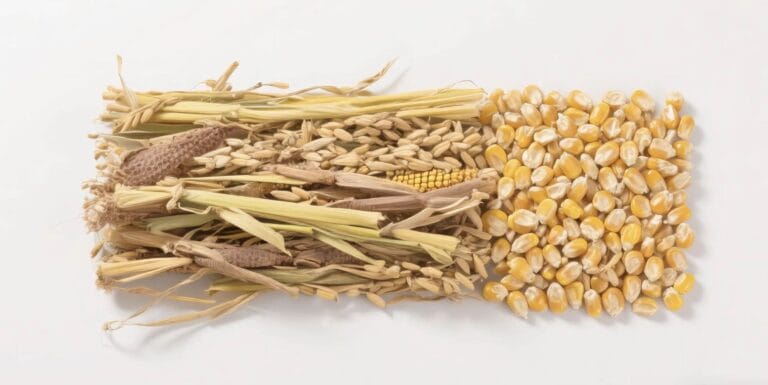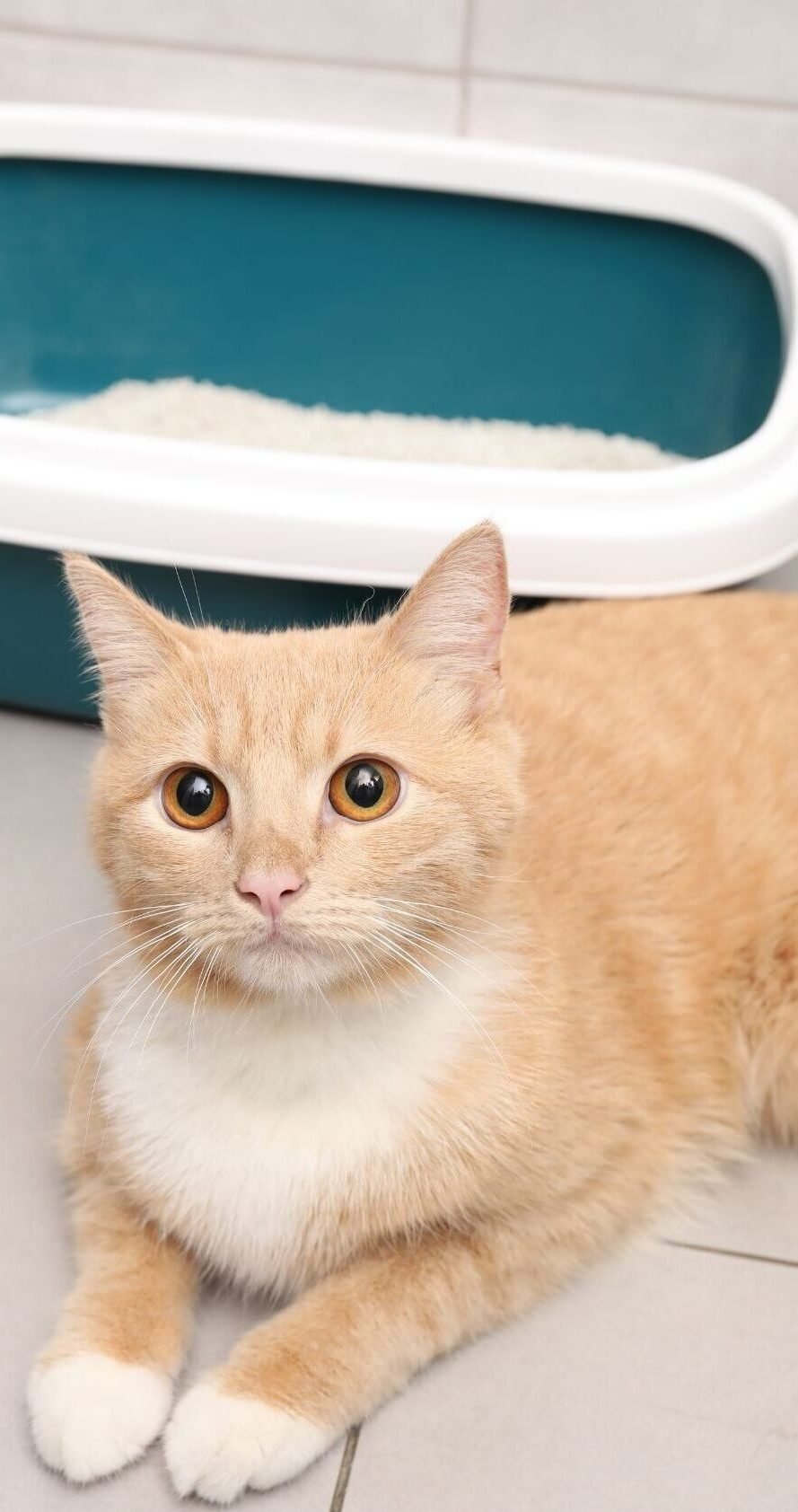Do you know how much the right litter can impact both our feline friends and our homes? Choosing the best cat litter isn’t just about filling a box; it’s about understanding the materials, their performance, and how they align with your cat’s needs and your lifestyle. That’s why I’ve put together this Ultimate Guide to Different Types of Cat Litter: Pros, Cons, and How They Work – to help you make an informed decision.
There’s a vast array of options out there, and each has its unique characteristics. Let’s dive in and explore the most common types.
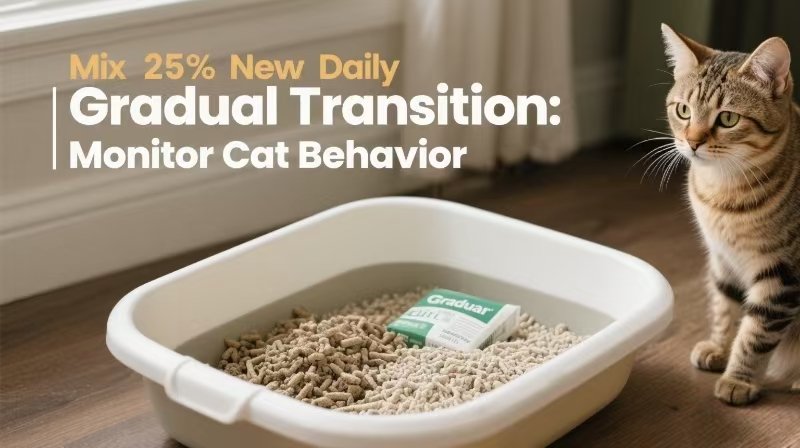
Understanding Cat Litter: More Than Just Absorption
Before we look at specific types, it’s helpful to know what functions cat litter serves:
- Absorption: Soaking up liquid waste.
- Odor Control: Trapping or neutralizing unpleasant smells, especially ammonia.
- Clumping: Forming solid clumps with liquid waste for easy removal (not all types do this).
- Comfort: Providing a comfortable surface for cats to dig and eliminate on.
- Safety: Being non-toxic and low in dust to protect respiratory health.
- Environmental Impact: How the material is sourced, produced, and disposed of.
Now, let’s break down the popular types:
Clay Cat Litter: The Long-Standing Standard
Clay litter, particularly bentonite clay, has been a staple for decades. It’s highly absorbent and comes in both clumping and non-clumping varieties.
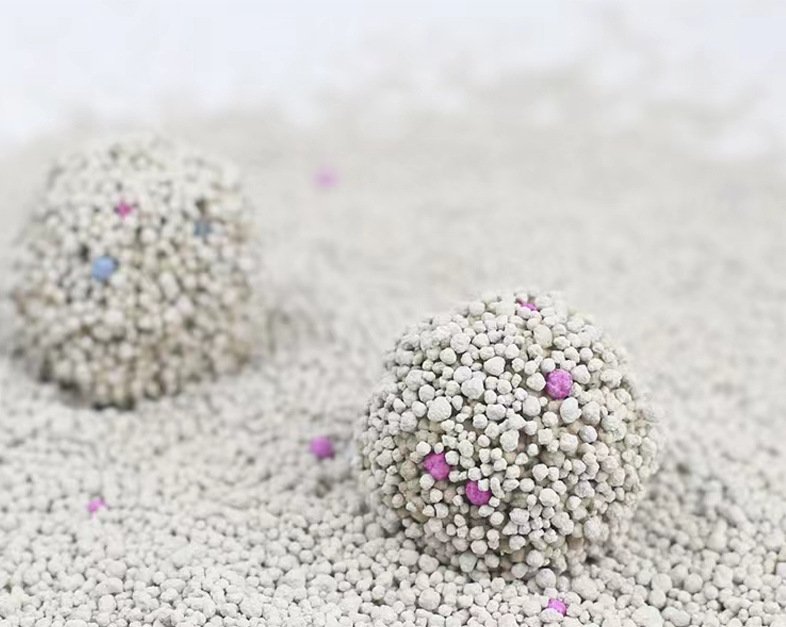
How Clay Litter Works
Non-clumping clay absorbs urine, which then saturates the clay, requiring the entire box to be changed periodically. Clumping clay contains bentonite, which swells and forms a solid mass when wet, allowing you to scoop out only the soiled parts daily.
Pros
- Widely available and relatively inexpensive.
- Many cats accept the texture readily.
- Clumping types offer convenient daily waste removal.
Cons
- Often high in dust, which can be a respiratory irritant for cats and humans.
- Non-clumping types don’t control odor as effectively as clumping ones and require full litter changes more frequently.
- Heavy to carry and dispose of.
- Clay is strip-mined, making it less environmentally friendly.
- Used clay litter is not biodegradable and contributes significantly to landfill waste.
Silica Gel Cat Litter: The Absorbent Crystals
Silica gel litter, also known as crystal litter, is made from sodium silicate sand processed into porous beads or crystals.
How Silica Gel Litter Works
These crystals are incredibly absorbent, soaking up moisture and dehydrating solid waste. They trap odor within the pores, and liquid evaporates, leaving the crystals relatively dry. They typically don’t clump and are meant to last for several weeks before a full change is needed.
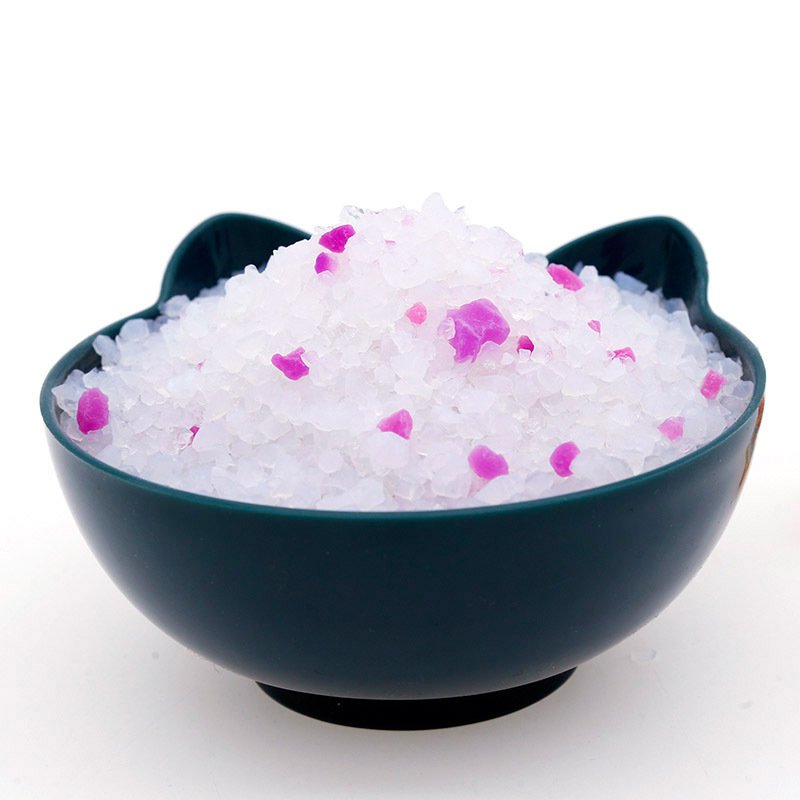
Pros
- Excellent odor control.
- Very absorbent and can last longer between full changes than clay.
- Low dust compared to many clay litters.
- Lightweight.
Cons
- Can be more expensive upfront.
- Texture can be uncomfortable for some cats, especially kittens.
- Does not clump, so scooping liquid waste isn’t possible; only solid waste is removed daily.
- Requires stirring regularly to distribute moisture and maximize lifespan.
- Not biodegradable.
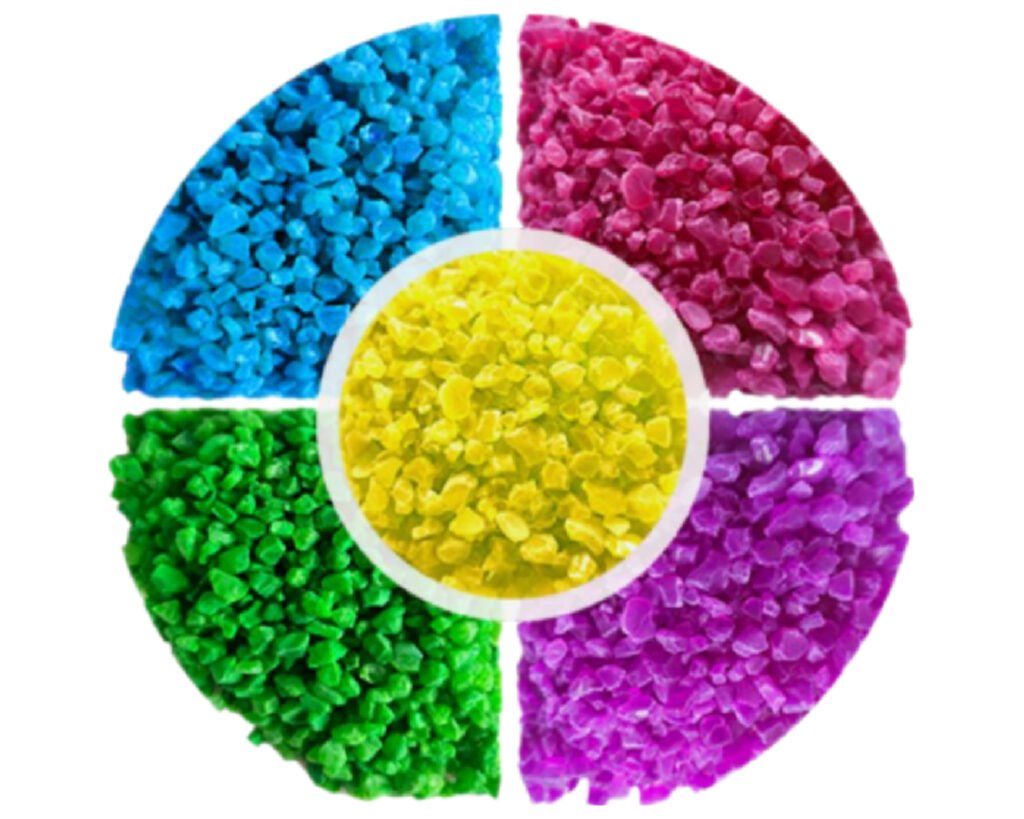
Wood Pellet Cat Litter: A Natural, Absorbent Option
Made from compressed sawdust or recycled wood scraps, wood pellet litter is a popular eco-friendly choice.
How Wood Pellet Litter Works
When wet, the pellets absorb liquid and break down into sawdust. This wet sawdust then settles to the bottom of the litter box. They typically do not clump, requiring regular scooping of solids and periodic sifting or full changes to remove the wet sawdust. Some types offer natural odor control from the wood itself.
Pros
- Biodegradable and compostable (check specific product guidelines).
- Often low in dust.
- Natural wood scent can help with odor (though some cats dislike strong scents).
- Made from renewable resources.
Cons
- Does not clump, making liquid waste removal less convenient.
- Requires specific sifting litter boxes or frequent full changes to manage the wet sawdust.
- Texture and size of pellets can be uncomfortable or unfamiliar for some cats.
- Some cats dislike the natural wood smell.
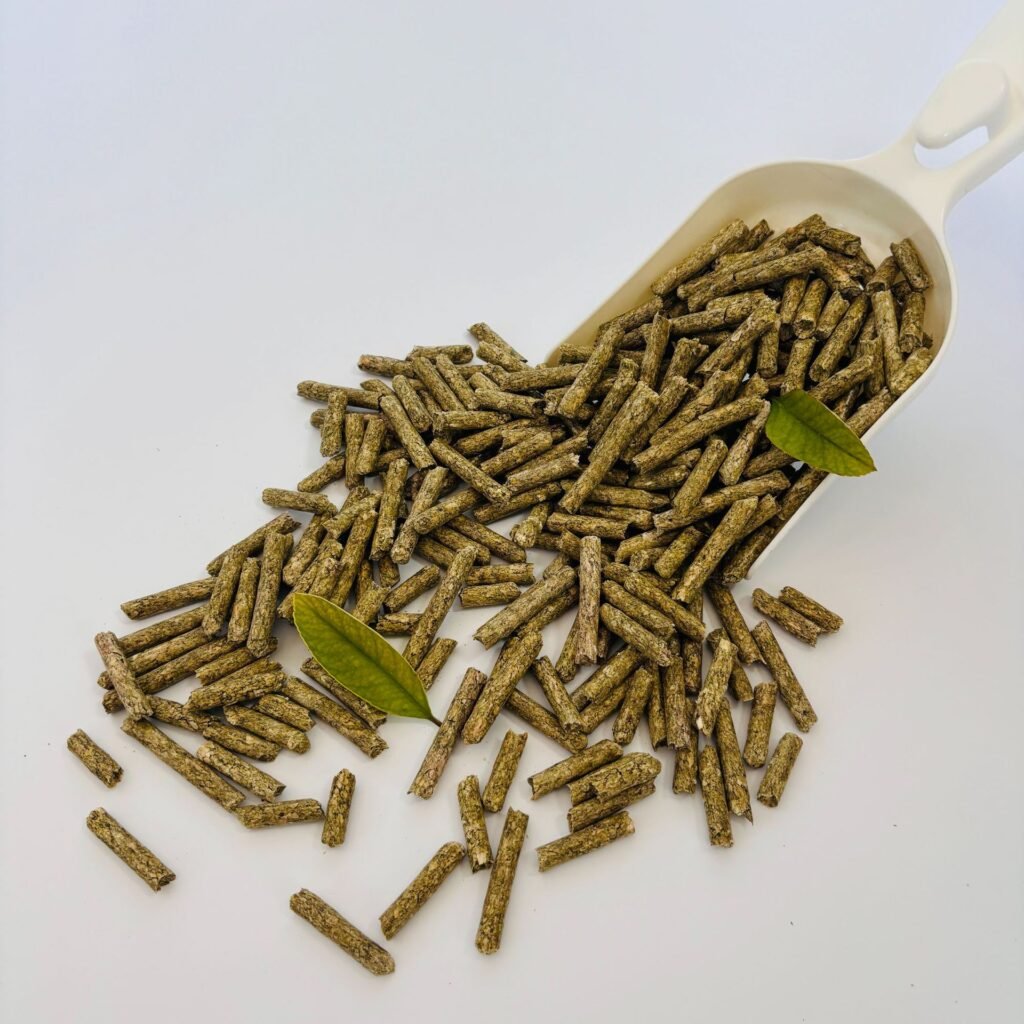
Paper Pellet Cat Litter: Recycled and Soft
Paper litter is made from recycled paper, such as newspapers or cardboard, processed into absorbent pellets or granules.
How Paper Pellet Litter Works
Paper pellets absorb liquid, often breaking down similarly to wood pellets. They are generally non-clumping, absorbing urine within the pellet structure. Solid waste is scooped out, and the saturated pellets or granules are removed during full litter changes.
Pros
- Highly absorbent.
- Biodegradable and often compostable.
- Virtually dust-free.
- Soft texture, which can be good for cats with sensitive paws or those recovering from surgery.
- Made from recycled materials.
Cons
- Odor control can be less effective than clumping clay or silica.
- Does not clump, requiring more frequent full changes.
- Can sometimes track more than pellets.
- Texture may not appeal to all cats.

Plant-Based or Grain-Based Cat Litter: The Sustainable Innovators
This category includes litters made from various plant materials beyond wood or paper, such as corn, wheat, walnut shells, cassava, and yes, as we specialize in at Qingke, agricultural byproducts like straw and rice husks combined with natural binders like edible starch.
How Plant-Based/Grain Litter Works
These litters leverage the natural absorbency of plant fibers. Many types, including our grain litter, utilize natural starches and other binders to create strong, rapid clumping action upon contact with moisture. Enzymes and natural deodorizing factors are often added for superior odor control.
Speaking from our experience developing Qingke Plant-Based Cat Litter, we designed it specifically for 400% faster clumping using hydrophilic plant fiber (straw & rice husk) and edible starch. This allows for swift removal of waste, which is key to managing odor and maintaining hygiene. Our patented technology (Patent No. 202010311363.2) focuses on enhancing these natural materials for optimal performance.

Pros
- Biodegradable and often flushable (always check local regulations!).
- Excellent clumping ability in many formulations (like ours) for easy cleaning.
- Superior, natural odor control (our Natural OdorLock™ system uses enzymes and deodorizing factors that eliminate ammonia for 30+ days).
- Often very low dust (ours is 99% dust-free), making it safe for sensitive cats and homes.
- Lightweight compared to clay.
- Made from renewable and recycled agricultural byproducts.
- Non-toxic and plant-based – certified free from chemicals and heavy metals by SGS.
Cons
- Can be more expensive than traditional clay.
- Some natural materials might initially have a scent that some cats or owners dislike (though formulations vary greatly).
- Scooping frequency is crucial to prevent clumps from sticking to the box if left too long.
Choosing the Right Litter: Considering All Factors
Navigating The Ultimate Guide to Different Types of Cat Litter: Pros, Cons, and How They Work shows there’s no single “best” litter for every situation. When making your choice, consider:
- Your Cat’s Preference: The most important factor! Some cats are picky about texture, scent, or dust level. You might need to experiment.
- Odor Control Needs: Do you need maximum odor elimination? Look for litters specifically designed for powerful odor control, like silica gel or advanced plant-based formulas with enzymatic action.
- Dust Levels: Essential for cats or people with respiratory sensitivities or allergies. Prioritize litters certified as low-dust or dust-free.
- Clumping vs. Non-Clumping: Clumping is easier for daily spot-cleaning, while non-clumping requires less frequent scooping but more frequent full litter changes.
- Environmental Impact: If sustainability is important to you, consider biodegradable, renewable, or recycled options like wood, paper, or plant-based litters. Look for certifications.
- Cost and Convenience: Balance your budget with the ease of use, weight, and availability of the litter.
Remember to transition your cat gradually when switching litters by mixing the new litter with the old over several days. Observing your cat’s behavior is key to finding their preferred substrate.
Conclusion
As a cat litter expert, I believe informed choices lead to happier cats and healthier homes. This Ultimate Guide to Different Types of Cat Litter: Pros, Cons, and How They Work aims to equip you with the knowledge to evaluate your options. From traditional clay to innovative plant-based solutions like the grain litter we develop at Qingke, each type offers distinct advantages.
By considering your cat’s needs, your own priorities regarding cleanliness and the environment, and understanding how each litter functions, you can confidently select the purr-fect match. Don’t hesitate to explore sustainable, high-performance options that offer both effective waste management and peace of mind.



